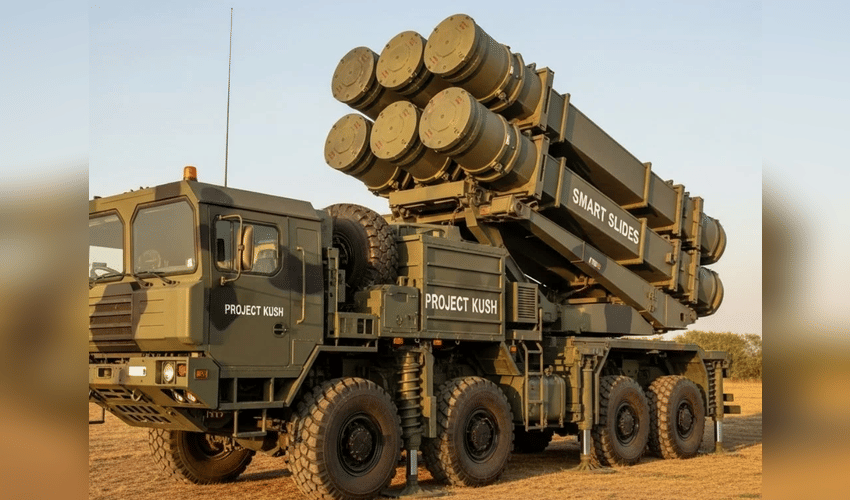Military
Advancing India's Naval Security: Project Kusha's Maritime Missile Defence System

India is actively developing a naval variant of its ambitious Project Kusha, a next-generation long-range surface-to-air missile system designed to bolster the country's maritime defense capabilities. This naval version specifically aims to protect Indian Navy warships against evolving aerial threats at sea, including notoriously challenging low-altitude sea-skimming missiles and extremely fast anti-ship ballistic missiles (ASBMs) flying at speeds exceeding Mach 7.
Project Kusha, often compared in capability to Russia’s advanced systems like the S-400, is a key part of India’s push for strategic autonomy in defense technology under the “Atmanirbhar Bharat” initiative. The naval variant integrates sophisticated tracking radars, high-energy missile interceptors, and rapid-response command systems designed to detect and neutralize high-speed threats during their critical terminal phases. This development is particularly crucial given regional adversaries’ deployment of ASBMs, such as China’s DF-21D and DF-26B, which pose significant risks to large naval vessels like aircraft carriers and destroyers.
The new maritime system will feature a 6x6-meter radar offering full 360-degree coverage, capable of detecting missiles up to 1,000 km away. This radar system and interceptor complement existing maritime defenses, such as the Barak-8 missile system and close-in weapon systems (CIWS), forming a layered defense shield that significantly enhances the survivability of India’s frontline naval assets. Integration with shipborne combat management systems ensures seamless coordination, allowing quick decision-making and engagement.
In addition to its tactical and operational advantages, the project represents a major step in India’s indigenous defense manufacturing, reducing reliance on foreign systems and fostering domestic technological expertise. The naval variant of Project Kusha is expected to be deployed on next-generation surface combatants, including the Project 18 class destroyers, around 2028–2029, marking a significant upgrade in India’s maritime security posture in the increasingly contested Indo-Pacific region.
This advanced naval air defense capability not only strengthens India’s deterrence against emerging missile threats but also highlights the country’s commitment to leveraging homegrown technologies to address complex modern warfare challenges, setting a new benchmark in maritime defense innovation. This development marks a critical enhancement of India’s layered air defense architecture, complementing existing land and air-based missile defense systems while addressing the pressing challenges posed by hypersonic and ballistic missile threats targeting naval vessels, thus securing India’s maritime borders and power projection capabilities.



